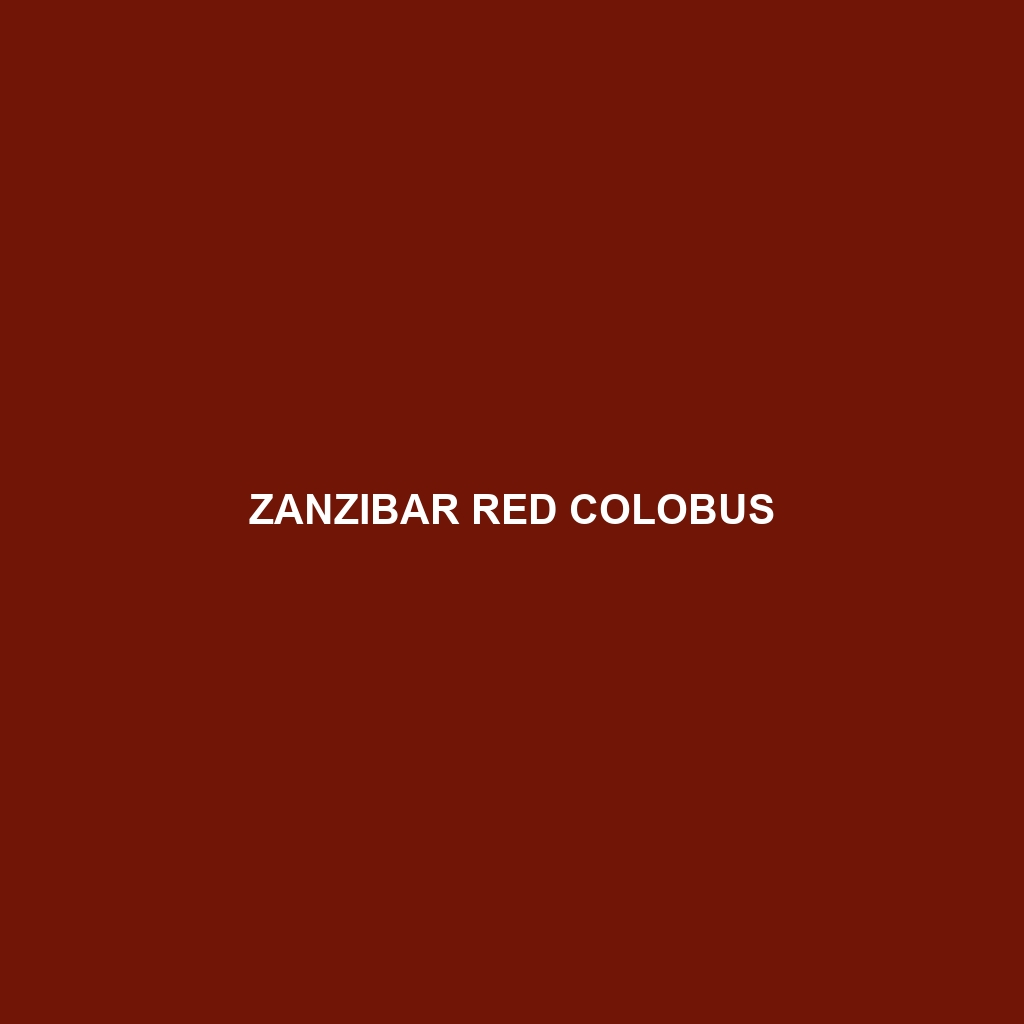Zanzibar Red Colobus (Piliocolobus kirkii)
The Zanzibar Red Colobus, scientifically known as Piliocolobus kirkii, is an endemic primate species found exclusively on the Zanzibar Archipelago in Tanzania. Known for their striking appearance and unique behaviors, these monkeys are an emblematic species of the island’s rich biodiversity. They are critically endangered, making conservation efforts crucial for their survival.
Physical Characteristics:
Size: Adult Zanzibar Red Colobus monkeys typically measure between 45 to 70 centimeters (18 to 28 inches) in body length, with tails adding an additional 50 to 80 centimeters (20 to 31 inches).
Weight: Males generally weigh around 8 to 12 kilograms (18 to 26 pounds), while females are slightly smaller, weighing between 6 to 10 kilograms (13 to 22 pounds).
Coloration: These primates exhibit a striking coloration with a combination of black, red, and white fur. Their backs and tails are a vivid reddish-brown, while their limbs and underside are white. They have a black face framed with white hair.
Special Features: Zanzibar Red Colobus monkeys have a distinctive long and bushy tail used for balancing. They also lack opposable thumbs, a characteristic feature of colobus monkeys, which has led to their name “Colobus” meaning “mutilated” in Greek.
Behaviors:
Social Interactions: These monkeys are highly social animals, living in groups that can range from 10 to 50 individuals. Social structures are dynamic, with females typically forming the core of the group while males may migrate between groups.
Communication: They use a variety of vocalizations, body postures, and facial expressions to communicate. Loud calls help in maintaining group cohesion and warding off intruders.
Feeding Habits: Zanzibar Red Colobus are folivorous, primarily feeding on leaves, but they also eat fruits, seeds, and flowers. They have a specialized stomach to digest their high-fiber diet which involves microbial fermentation.
Ecological Roles: As folivores, they play a crucial role in their ecosystem by aiding in seed dispersal and maintaining the health of the forest through their feeding activities.
Habitats:
Natural Habitat: Zanzibar Red Colobus monkeys are primarily found in coastal forests, mangrove swamps, and agricultural areas. They are most commonly associated with the Jozani Forest in Zanzibar.
Adaptations: These monkeys are adapted to both primary and secondary forests. They are arboreal, spending most of their time in the trees, but can occasionally be seen on the ground. Their long limbs and prehensile tails aid in navigating the forest canopy.
Conservation Status:
IUCN Red List: The Zanzibar Red Colobus is classified as Critically Endangered due to habitat loss, hunting, and human encroachment.
Threats: Major threats include deforestation for agriculture, charcoal production, and urban development. Additionally, they face threats from hunting and capture for the pet trade.
Conservation Efforts: Efforts to conserve these primates include habitat protection, reforestation projects, and community-based conservation programs aimed at sustainable land use practices.
Fun Facts:
The Zanzibar Red Colobus is one of the few primate species that can tolerate a degree of salinity, which allows them to exploit mangrove areas.
They are known for their curious and fearless nature, often approaching humans more closely than other wild primates.
Unlike most other primates, they have a unique dietary adaptation that allows them to consume toxic or unpalatable leaves that other animals avoid.
The Zanzibar Red Colobus stands as a symbol of Zanzibar’s unique wildlife heritage and the urgent need for conservation efforts to preserve this fascinating species for future generations.
